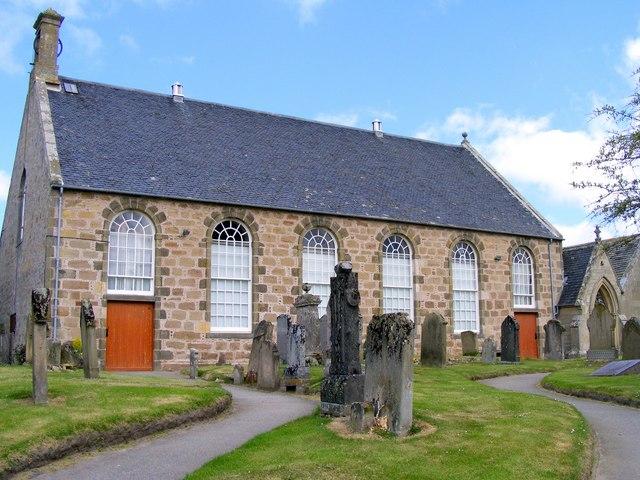Findhorn Church
Moray , Grampian
Findhorn Church was built in 1843, by architect John Urquhart. While it was repaired and altered in 1872, it is otherwise largely unchanged and features a Free Church interior.

Traditional reformed church design with rare triple pulpit.
Forres, Grampian
The earliest church records go back to a charter of King William dated 1189- 99 in which he gave the churches of Forres and Dyke to the Bishop of Moray. There was a Kirk Session keeping records in Dyke in 1627 but surviving minutes date from 1663.
The current parish church of Dyke, built 1780-1, stands on or close to the pre-Reformation church. Following the Reformation, the traditional arrangement of church interiors was altered to conform to the reformed emphasis on the centrality of Word and Sacrament. The pulpit was placed on the long wall of the church with the Communion Table in front in a central position so that the congregation were seated on three sides round the Lord’s Table. This pattern is clearly illustrated in Dyke church.
Another traditional feature is the three decker pulpit and sounding board, one of the few left in Scotland. The minister preached from the upper level, in the level below the precentor led the singing of the psalms unaccompanied. The lowest seat was for the beadle but there are those that say it was the penitent’s box where sinners, caught by the elders during the week, sat or stood in shame on a Sunday.
The building at the east side of the church, which is now used as the church hall, dates to the 17th century and was originally part of the Brodie burial chamber, with the crypt lying below. The Ricardus Brothie stone, thought to be a coffin slab, dated 1446 is built into the north wall of the church hall. In the church porch there is the Kinnaird stone, dated 1613, bearing the arms of the Kinnaird family and an inscription. In the porch to the hall is a fine marble memorial to Lieutenant Colonel James Brodie Pattullo CB who died in 1855 during the Crimea war.
The Rodney Stone, a 9th century Pictish symbol stone, was found in the churchyard during the digging of the foundations; it is now in Brodie Castle grounds. It commemorates the victory of Admiral Lord Rodney over the French and Spanish fleets at Dominica in 1782.
Moray , Grampian
Findhorn Church was built in 1843, by architect John Urquhart. While it was repaired and altered in 1872, it is otherwise largely unchanged and features a Free Church interior.
Burghead, Highland
Burghead, Grampian
An active, all age church at the heart of our coastal village in northeast Scotland.